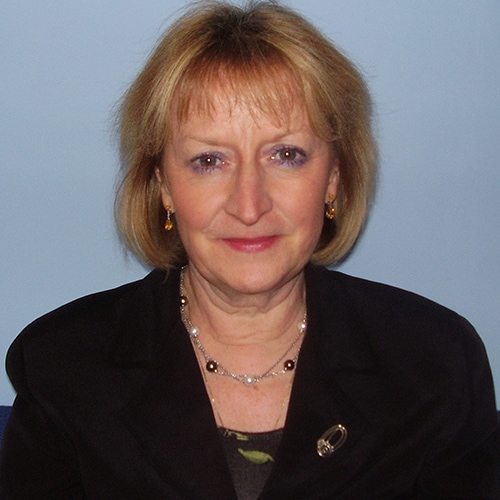
Pamela Shaw is Professor of Neurology at the University of Sheffield and Director of: the Sheffield Institute for Translational Neuroscience (SITraN); the NIHR Sheffield Biomedical Research Centre for Translational Neuroscience and the Sheffield Care and Research Centre for Motor Neuron Disorders. She is a Clinician Scientist in Neurology, formerly a Wellcome Trust Senior Fellow and an NIHR Senior Investigator. Her work investigates genetic, molecular and neurochemical mechanisms underlying ALS/MND; identifies new therapeutic targets and translates new neuroprotective and symptomatic treatment approaches into the clinic, including genetic therapy approaches. She has active programmes in systematic biosample collection and biomarker identification in ALS/MND. From 2009-2016 she initiated and led the national UK Clinical Studies Group for ALS/MND, a clinical research and trials network which links 23 ALS/MND Care and Research Centres. Prof. Shaw has taken part in more than 25 ALS/MND clinical trials, including roles as Chief Investigator and Steering Committee member. She has authored more than 570 publications (H-index 118). Her research is funded by NIHR, the UK Medical Research Council, Wellcome Trust, MND Association, MyName’5 Doddie Foundation, Fight MND (Australia) and Department of Defense (US), EU and biotech/ pharmaceutical industry partners. Pamela Shaw has received multiple national and international awards for her work including: DBE for Services to Neuroscience; American Academy of Neurology Sheila Essey Award; International ALS/MND Alliance Forbes Norris Award; Royal College of Physicians Jean Hunter Award; FMedSci; Fellowship American Association for the Advancement of Science; ABN Medallist-2019; Queen’s Anniversary Award to SITraN- 2019; British Neuroscience Association Major Contribution Award 2022.
The journey to develop better neuroprotective therapies for ALS: are we winning?
Abstract: Motor neuron disease (MND) also known as amyotrophic lateral sclerosis (ALS) is a devastating neurodegenerative disorder with a lifetime risk of approximately 1 in 350. It is the commonest neurodegenerative condition of midlife, can be associated with fronto-temporal dementia (FTD) with an average life expectancy of 2-3 years from symptom onset. Five to 10% of patients have familial disease, but a causative gene will be found in >20% of cases when genetic testing is systematically performed. Multidisciplinary care and improved symptom management, particularly addressing the problem of neuromuscular respiratory failure, have produced some improvements in life expectancy and quality of life. However, the heterogeneity and complex pathophysiological mechanisms contributing to motor neuron injury have posed a challenge for effective neuroprotective therapy development. In recent years genetic advances have identified >30 genes which cause or predispose to ALS. A strategy has emerged where more accurate sub- classification of patients can be made based on identification of risk genes beyond the traditional boundaries of sporadic and familial ALS. This expanded genetic understanding has enabled more effective modelling of ALS in the laboratory, with a variety of in vivo and in vitro models now available. Particularly important has been the development of cellular reprogramming techniques allowing the creation of motor neurons and neighbouring glial cells to allow dissection of disease mechanisms, identification of new therapeutic targets and therapeutic screening using small molecule or genetic therapy approaches. There is a pipeline of genetic therapy approaches for different subtypes of ALS now in clinical trials. Pre-clinical work to achieve reduced expression of the SOD1 (Cu-Zn superoxide dismutase) gene has given confidence to try this approach in patients with SOD1 mutations. Spectacular results have emerged from the Phase1/2/3 anti-sense oligonucleotide trials, and the FDA gave expedited approval for tofersen in April 2023. Genetic therapy approaches to tackle the commonest genetic cause of ALS caused by mutations in the C9orf72 gene will be discussed. Small molecule neuroprotective therapies include several agents of modest effect including the anti-glutamate drug riluzole, the anti-oxidant edaravone and the combination therapy relyvrio. Promising results have emerged from the recently completed MIROCALS trial of low-dose interleukin-2 as an anti-inflammatory agent. Recent innovations in trial design will enhance outcome measures, patient selection and randomisation, minimise the impact of clinical variability and increase statistical power. Platform trials and patient reported outcomes have the potential to improve the pace of validation of therapeutic agents. This is particularly the case if combined with surrogate biomarkers of disease burden and therapeutic efficacy which are now emerging. In summary, there is great potential for developing improved neuroprotective treatments for ALS in the near future. The huge unmet need of ALS patients is clear and a range of tools are now poised for effective translation.



